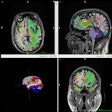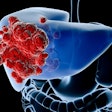Information regarding right ventricular (RV) longitudinal and circumferential strain gathered from cardiac MRI can help predict adverse outcomes in patients with heart failure with preserved ejection fraction (HFpEF).
A team led by medical student Leyi Zhu of the Chinese Academy of Medical Sciences and Peking Union Medical College in Beijing, China, reported that this information offers more prognostic value than traditional clinical and imaging-derived risk markers. The study results were published June 17 in Radiology.
"[Our] findings offer novel insights into refining risk stratification in this patient population and provide evidence of the prognostic value of RV dysfunction as evaluated with cardiac MRI FT in patients with HFpEF," the group wrote.
HFpEF makes up more than half of all heart failure cases and is particularly challenging to manage because of its "complex pathophysiologic characteristics and heterogeneity in clinical presentation and outcomes," Zhu and colleagues noted. But although RV function is an independent predictor of clinical status and prognosis in multiple cardiovascular diseases, the prognostic value of RV strain in patients with HFpEF is unclear, they explained.
The team used two models -- one that included data from RV strain variables culled from cardiac MRI feature tracking and another that included clinical, conventional imaging, and RV strain variables -- in a study that included 1,019 patients with HFpEF who underwent cardiac MRI between January 2010 and December 2018 and explored any associations between these variables and adverse outcomes.
The team reported the following:
- RV global longitudinal and circumferential strain information identified on cardiac MRI feature tracking was associated with all-cause mortality (adjusted hazard ratio per 1% increase, 1.07 [p = 0.005] and 1.13 [p < 0.001], respectively).
- A model that combined clinical, conventional imaging, and RV strain variables showed the best discrimination for all-cause mortality (concordance index, or C index = 0.794, with 1 as reference).
The results are promising, but more research is needed, according to the investigators.
"Future research should focus on prospective, large-scale, multicenter studies involving scanners and FT software from multiple vendors to further validate the potential of RV strain parameters for improving risk stratification in routine clinical settings," they noted.
The study "demonstrates the potential of using RV strain analysis at cardiac MRI to provide robust prognostic markers in patients with HFpEF, potentially allowing for earlier identification of patients at risk for adverse clinical outcomes who would benefit from earlier effective treatment," noted David Murphy, MD, and colleague Sean Quinn, MD, both of St. Vincent's University Hospital in Dublin, Ireland, in an accompanying commentary.
"Perhaps a shift in our attention toward the often-overlooked RV might be fruitful in efforts to better understand HFpEF and perform disease stratification in patients with this condition," the two concluded.
The complete study can be found here.



.fFmgij6Hin.png?auto=compress%2Cformat&fit=crop&h=100&q=70&w=100)





.fFmgij6Hin.png?auto=compress%2Cformat&fit=crop&h=167&q=70&w=250)











